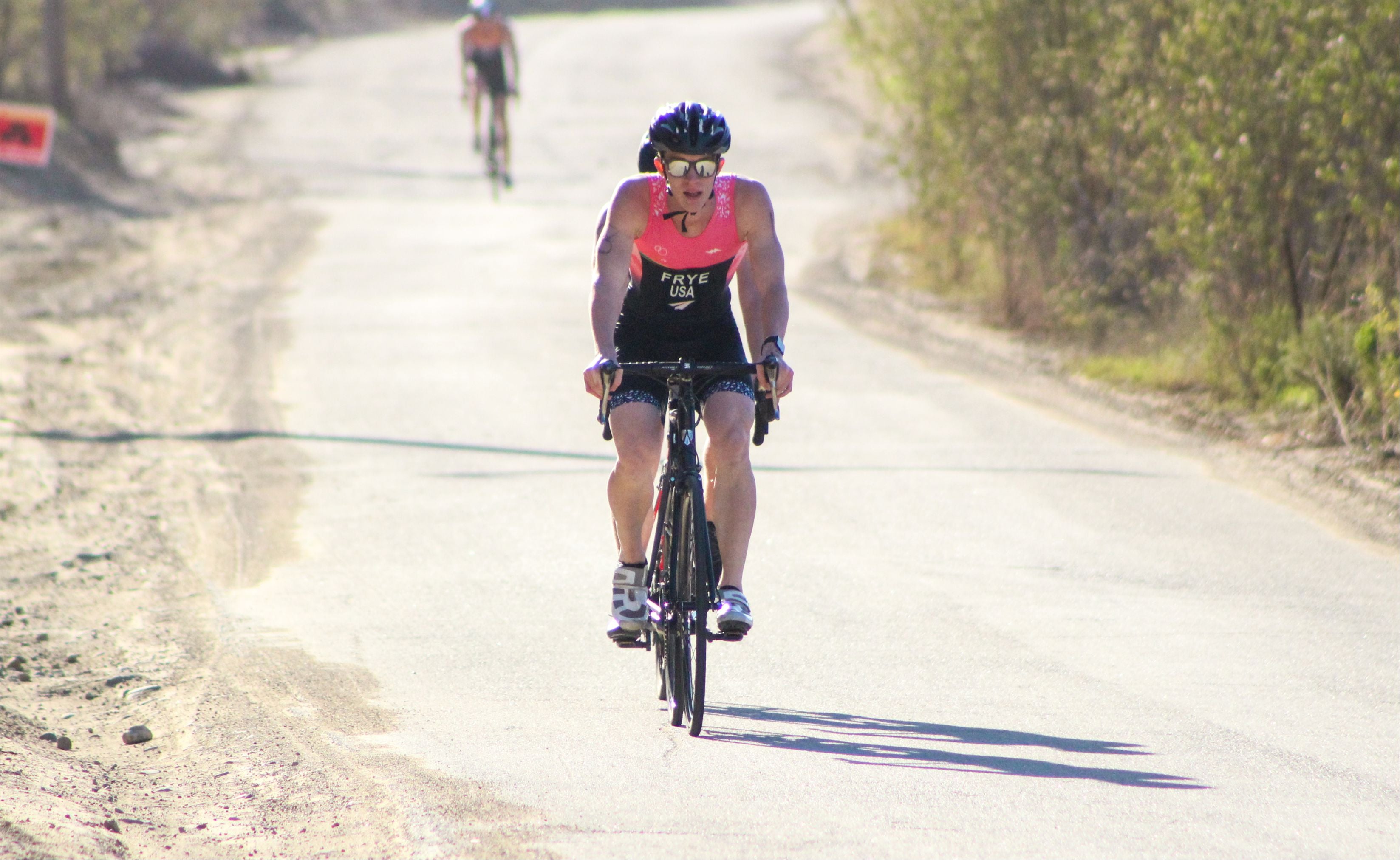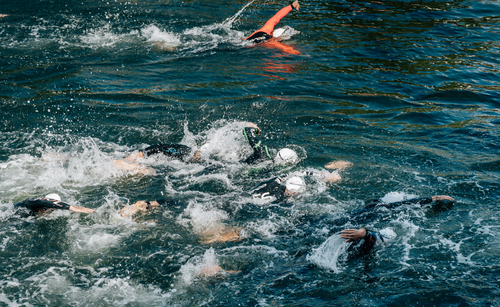Why Triathletes Should Train In Zone 2

@fryecameron (Instagram)
Zone 2 training may not be as satisfying as a grueling interval session, but it’s essential to your success as a triathlete.
For most triathletes, there’s a strong emphasis on increasing speed and pace to “feel the burn.” Unfortunately, while this type of training can help improve overall fitness, it can also lead to overtraining, burnout, or even injury. This is why training zones are becoming increasingly important today.
5 Main Training Zones
-
Zone 1: 50–60% of max-effort (Warmup/recovery)
-
Zone 2: 60–70% of max-effort (Base fitness)
-
Zone 3: 70–80% of max-effort (Aerobic endurance)
-
Zone 4: 80–90% of max-effort (Anaerobic capacity)
-
Zone 5: 90–100% of max-effort (Speed training)
While each training zone has a specific purpose or training benefit, Zone 2 is one of the most important aspects of any training program. Zone 2 training is working in a heart rate or power zone that equates to a steady aerobic effort. A Zone 2 effort is one that you’re able to comfortably maintain a conversation during while also focusing on your rhythm, efficiency, and pace.
As a general rule of thumb, Zone 2 is roughly 85% of your threshold heart rate or 65% of your threshold power.
The Benefits of Zone 2 Training
The primary benefit of training in Zone 2 is that it builds a strong aerobic base and improves endurance while helping to avoid overtraining or injury. An increased aerobic capacity also improves the ability to sustain sub-threshold paces for longer periods of time and can help you recover faster between higher-intensity training sessions.
By sticking to lower-effort sessions (HR or power) over time, most triathletes can increase the pace they can sustain while maintaining the same heart rate effort. Because of this increased aerobic capacity, you’ll be able to log more training hours at a lower heart rate — resulting in better muscular endurance during long-distance races.
In short — Zone 2 training will help you avoid injury, improve aerobic capacity, and best of all, race faster at a lower overall effort. In addition, by training in Zone 2, along with the other zones, you’ll be able to log more hours of training with less negative impact, leading to better times on race day!

@fryecameron (Instagram)
Zone 2 training may not be as satisfying as a grueling interval session, but it’s essential to your success as a triathlete.
For most triathletes, there’s a strong emphasis on increasing speed and pace to “feel the burn.” Unfortunately, while this type of training can help improve overall fitness, it can also lead to overtraining, burnout, or even injury. This is why training zones are becoming increasingly important today.
5 Main Training Zones
-
Zone 1: 50–60% of max-effort (Warmup/recovery)
-
Zone 2: 60–70% of max-effort (Base fitness)
-
Zone 3: 70–80% of max-effort (Aerobic endurance)
-
Zone 4: 80–90% of max-effort (Anaerobic capacity)
-
Zone 5: 90–100% of max-effort (Speed training)
While each training zone has a specific purpose or training benefit, Zone 2 is one of the most important aspects of any training program. Zone 2 training is working in a heart rate or power zone that equates to a steady aerobic effort. A Zone 2 effort is one that you’re able to comfortably maintain a conversation during while also focusing on your rhythm, efficiency, and pace.
As a general rule of thumb, Zone 2 is roughly 85% of your threshold heart rate or 65% of your threshold power.
The Benefits of Zone 2 Training
The primary benefit of training in Zone 2 is that it builds a strong aerobic base and improves endurance while helping to avoid overtraining or injury. An increased aerobic capacity also improves the ability to sustain sub-threshold paces for longer periods of time and can help you recover faster between higher-intensity training sessions.
By sticking to lower-effort sessions (HR or power) over time, most triathletes can increase the pace they can sustain while maintaining the same heart rate effort. Because of this increased aerobic capacity, you’ll be able to log more training hours at a lower heart rate — resulting in better muscular endurance during long-distance races.
In short — Zone 2 training will help you avoid injury, improve aerobic capacity, and best of all, race faster at a lower overall effort. In addition, by training in Zone 2, along with the other zones, you’ll be able to log more hours of training with less negative impact, leading to better times on race day!
SEE WHAT CUSTOM APPAREL LOOKS LIKE

GEAR UP
MORE FROM THE BLOG

How to Plan Your 2019 Season to Put Your Hard Training to Good Use
Team Innerforce's 2019 coach, Rick Lapinski, explains how to effectively plan your race schedule in order to get the most...

Breakfasts to fuel your bike session
To bike well, one has to eat well. Early morning sessions are always tough, but focussing on a good...

Innerforce Signs Kayla Kobelin: "I'm excited to to push myself even further"
It is with great pride that we, at Innerforce, welcome Kayla Kobelin to the Innerforce family as our first sponsored...

Triathlete Nutrition: What to Eat to Maximize Performance
Nutrition is crucial in any sport but for a multi-faceted discipline like triathlon, which tests your swimming, cycling and running...



